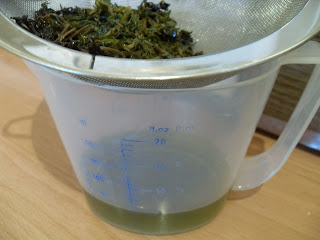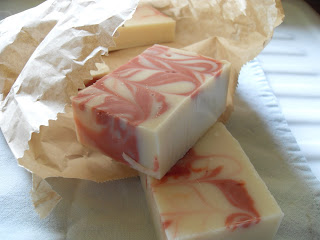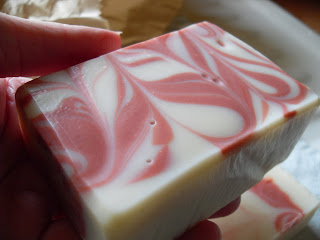There is no doubt that hair styling is one area that changes so quickly it is almost impossible to keep up with the latest styles and trends without inflicting damage on the hair. It is altogether too easy to allow your hairdresser to do what she/he wants and end up looking decidedly unattractive, albeit in fashion. But with a little assertiveness it is also a time when a girl can be as individual as she wants. It's that word 'assertive'. How many of us go to the hairdresser with something in mind and come out feeling not at all happy, even more so since we often don't even tell the hairstylist what we really feel.
“Dorrie” is distressed because she is not clever at doing her hair, and asks me to suggest some means of dressing it. I think she will find the simple method now fashionable will suit her. Let her twist the back to form a projecting knob, and coil the remainder round this. A little practice will make it easy to do it well and becomingly. I don’t advise any attempt at elaboration. Home Chat, January 1897.
I remember going to the hairdresser in the 1970's to have my hair cut without any distinct idea of how I wanted my hair to look. I was given a magazine to look through and when I found a hair style that I liked I would point it out to the stylist. All artifice would be employed so that I left the hairdressers looking as close to the picture in the magazine as possible. No instruction was given on how to keep the style looking good myself and I would always try to go for as long as possible without washing it… difficult for me when the shampoo usually made me itch within a few short hours of my visit. In general those days are gone and most hairdressers are much more helpful and more knowledgeable about how to care for your hair. A visit to the hairdresser should be less about forcing your hair to assume 'the style' and more about discovering what is achievable given your own particular type of hair.
Choosing a hair style is extremely difficult and should not be a spur of the moment decision. Few of us can take scissors to our hair, hack away and come out with a short, perfectly attractive, albeit tousled look. Hair cutting and styling is an art and not every qualified hairdresser is an artist. With this in mind you should begin by looking at the shape of your face.
It can be very difficult to determine for yourself what shape your face is, even asking for help from a friend or doing the old trick of drawing around your reflection with lipstick can produce unhelpful results. But don’t worry there is a scientific approach.
Determining the shape of your face
A.C. – I think you very foolish indeed to worry about such a trifle! I may tell you, for your comfort, that many people would prefer to have a “round face” to a “very thin and rather long one.” To try rubbing your face, till you have made the skin tender and irritable and sore is one of the most foolish proceedings I ever heard of. Suppose you were to make your skin irritable and blotchy, that would not improve your appearance, would it? The people who make the remark to you that you are “fat” must be exceedingly ill-bred, and I should not mind their opinion at all. A great many people would much rather have a fat than a thin face, and I daresay as you grow older that you will think nothing more of the matter. Very probably the world at large would prefer your rounded face to the “long thin one” of your friend! Think no more about it, but be glad that you have good health, which is one of the greatest possessions, and one of the greatest beauties in the world! The Young Woman, October 1900
You will need a tape measure, a piece of paper and a pen or pencil. Measure your face from side to side across the top of your cheekbones and write it down. Next measure your face from side to side across the widest part of your jawline. Then measure your forehead at its widest point from side to side and write this down. Finally measure from the tip of your chin to your hairline right across the middle of your face. Now look at the results on your paper.
Oval Face - Length equal to one and a half times width.
An oval face has a rounded hairline and is only slightly narrower at the jawline and temple. It is a very useful shape to have since almost any hair style looks good on this shaped face. Off the face styles are particularly attractive on an oval shaped face, showing the perfect balance and harmony of proportion that these lucky girls have. If you wear your hair down onto your face, especially with heavy styles, you will spoil this perfect symmetry. Wearing the hair too long will lengthen the face and make it appear oblong.
Round Face - Your face is as wide as it is long. This may vary a little but generally the measurement is close.
The widest point of this face is at the cheeks and ears, the hairline and jawline being very round in shape. Girls with a round face will benefit from slightly longer styles which can elongate the face slightly. Wearing the parting off centre and adding height at the crown will also suit. The hair can be swept back off the face or forward onto it. Layering on the top to give fullness and shaped close to the face beneath will also help make the face appear longer. Avoid centre partings and hairstyles that mimic the shape of the face.
Oblong - Longer than it is wide.
An oblong or rectangular face tends to have a high forehead and be the same width at the temples as below the cheek bones. This face shape suits short and medium length hair with wisps and fullness at the temples and cheeks to add width. Fringes can be worn as they will soften the length of the face. Avoid high hairstyles and very long hairstyles as these will simply make your face look even longer.
Heart - Narrow at jaw line, wide at cheekbones/and or forehead.
A heart shaped face is wide at the temples and narrows considerably towards the chin. The lucky girl who has a heart shaped face looks stunning with a bobbed or chin length style. She can wear her hair longer too but if she goes too short she needs to create fullness at the back to balance the narrowness of her chin. Avoid short full styles or the slicked back looks. Too much height on top will make you look top heavy.
Square - your face is about as wide as it is long.
A square face is recognisable by the strong square shape to forehead and chin. These girls need softness and rounded styles to round out those square edges. Wispy fringes and fullness on top are most becoming to this shaped face. Short and medium length haircuts are best. Long straight styles are to be avoided as they accentuate the angular chin and length of the face.
Diamond - Widest at cheekbones, narrow forehead and jaw line of approximately equal widths.
A diamond shaped face is very dramatic indeed and the lucky girl who has this shaped face can pretty much please herself what style or length of hair she chooses. Beware though of accentuating the narrowness of your chin by styles that are cut too short. Do not hide this wonderful shape by putting too much hair onto the face.
Effective Hairdressing – Never pile your hair high on the head unless it be of faulty shape and needing such elaboration. A girl with a head of beautiful contour should always so dress her hair as to reveal its lovely lines and shape, for nothing sets off a pretty face so well as a suitably dressed head. Artistic and suitable hair-dressing should be carefully studied by every girl who wishes to make the best of, and improve, her appearance. Home Chat, December 1895.
Choosing a hairstylist
This is not as easy as it sounds. There are literally thousands of hairstylists to choose from and although most of them are well qualified and will proudly display their diplomas on the wall of the salon this is no guarantee of getting a good haircut.
A Girl’s experiences with a French Hairdresser
She was returning late one night from a house in Mayfair, when a man rushed from behind her and seized her black bag. He made off with it, and I think the disappointment must have been keen when he found only some hair-brushes and a wig which required re-curling. The Young Woman November 1900.
Ask your friends to tell you who cuts their hair, ask strangers, especially if you see someone with a fabulous hairstyle, they will be flattered that you noticed. Once you think you have found your hairstylist book a consultation, not an appointment. A consultation is usually free, during this visit you can discuss your hairstyle options with the stylist and talk about any concerns you have.
A Lady Artist in Hair
A young girl in New York created quite a sensation some time ago by the artistic manner in which she dressed her mistress’s tresses. She is now earning a considerable sum by attendance on ladies, her sole duty being the arrangement of locks and the artistic building of fashionable coiffures. She has a happy knack of blending the hair to suit the style of face and the curves of neck and head, the coiffure being treated differently with each change of dress. Home Chat, 1895.
It is important that you feel comfortable with the stylist and that you feel that he or she understands what you want, but also look for a stylist who is confident enough to tell you when you are being unreasonable. Remember very few women can have EVERY style. Look at the stylists own hair… is it well cared for? Is it over coloured, dry and lifeless? Take a look at the salon itself. Is it clean and neat and tidy? Are the magazines out of date? Are the hairstylists stuck in a rut or are they keeping up to date with all the modern cutting edge techniques? If they are young have they enough experience to temper their enthusiasm?
If like me you have allergies or prefer to use totally natural products you can discuss this with the stylist and if necessary look at the ingredients list on the products that they normally use. If you really want you can bring your own shampoo, don’t feel that you have to use the ‘salon special.’ It is the hair dressers cutting and styling skill that you really need… anyone can buy shampoo and conditioners.
Getting to know your stylist is important, making the stylist understand your needs and being sure that your stylist is happy to work with them is very important. Yes I know hair grows again but its not pleasant or easy to complain about a hairstyle that has gone wrong. But you must give your hairstylist feedback, both good and bad. If you like it, then say so and say why you like it, it will help the stylist get to know you and what you want for future visits. If you don’t like it then you need to try and be specific about why you don’t like it. Try not to be too critical, the stylist is only human and if you are not able to explain what you want, or she is not able to understand what you want then you are unlikely to have a happy outcome.
Do not be unreasonable and expect your stylist to be able to reproduce the same hair style every time you go. She/he may not remember exactly what was done on a previous visit and your hair changes regularly depending upon many things, not least of which is your health, your natural bodily cycle, hormone fluctuations and the weather! If you really love the hairstyle get your photograph taken immediately showing all sides and take it back with you the next time you go.
No one likes to complain, but you will soon run out of hairdressing salons to choose from if you simply leave without saying anything and try a new one the following month. If necessary you could rehearse what you might say if it looks like it is going awry. Think of suitable phrases that might be useful. Such as 'I usually put it like this' or ' I want it long enough to go behind my ears' or 'I prefer to have it a little softer looking, less formal, but we can work on that the next time I come'. Start out as you mean to go along with your hair stylist, you are in charge, you tell him/her what you want and take the relationship on from there. A little time and effort invested in building a good relationship with your stylist will repay you a thousand fold.















































